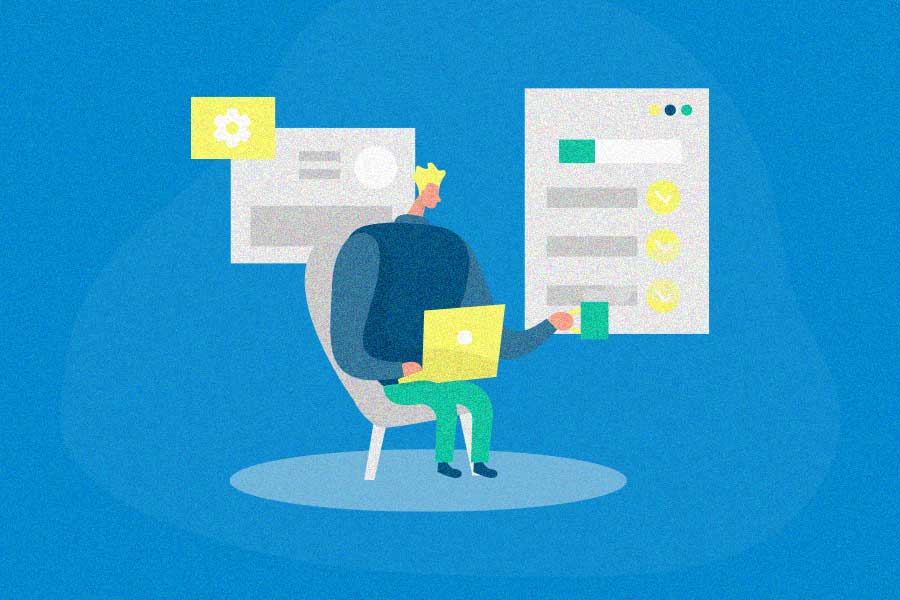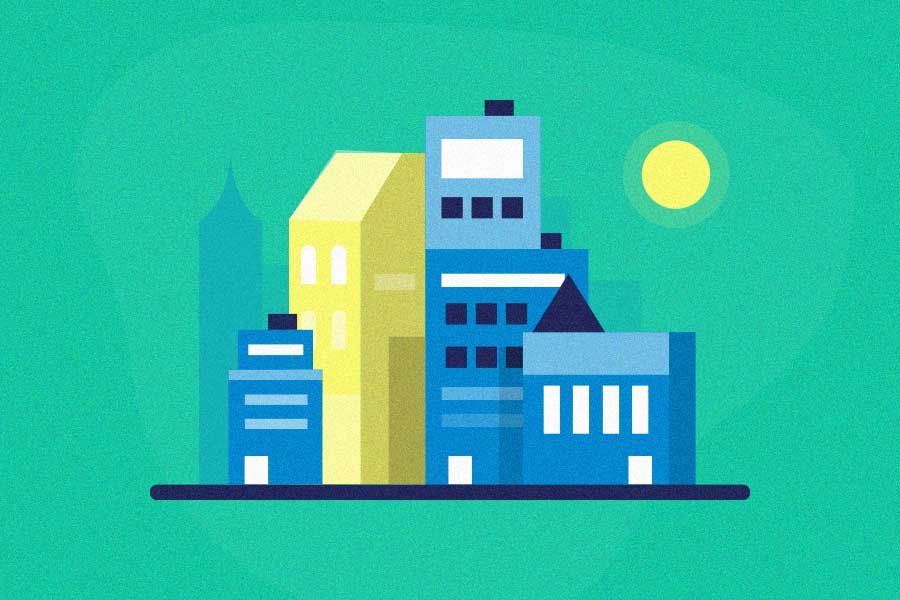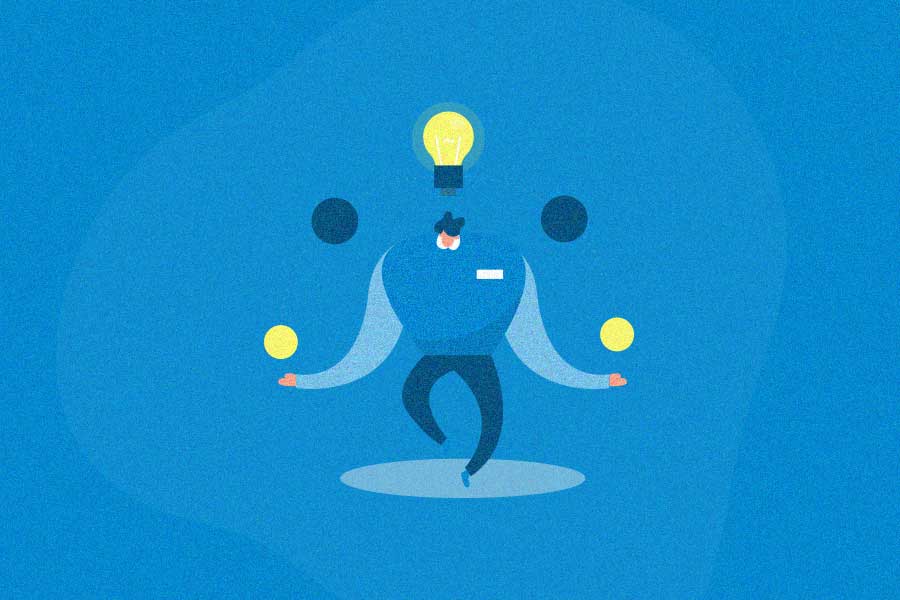Refer-a-friend programs are your golden ticket to customer acquisition, retention, and trust-building all rolled into one marketing powerhouse. But here’s the cold, hard truth: most referral programs crash and burn because they’re boring, complicated, or just plain irrelevant. Don’t worry though—we’ve got your back!
Here’s your step-by-step playbook for building a refer-a-friend campaign that actually delivers results, plus 10 battle-tested reward ideas that’ll have customers tripping over themselves to spread the word about your brand.
What is a refer-a-friend program?
A refer-a-friend program is your secret weapon for growth—it transforms your existing customers into a volunteer marketing army who can’t wait to tell their friends about you. And let’s be real: people trust recommendations from their friends about 1000% more than they trust your marketing messages (no offense to your brilliant copywriting).
The best referral programs use smart software to track who’s referring whom and automatically dish out rewards. We’re not talking about stone-age punch card systems where you’re manually tracking referrals.
Refer-a-friend programs are different from affiliate programs. Affiliates haven’t always used the products they promote, but referral programs rely on people’s recommendations of products they already love.
How successful are refer-a-friend programs?
Successful customer referral programs, like those from Dropbox, Uber, Airbnb, and Tesla, prove that refer-a-friend programs work. That is, as long as you follow best practices.
When done right, a refer-a-friend campaign becomes your 24/7 growth engine: it maximizes word of mouth, accelerates customer acquisition, and fosters customer loyalty – all thanks to social proof. The stats don’t lie:
- 84% of consumers trust referrals from friends and family more than any other source of information about a brand. (Nielsen) Sorry, expensive TV commercials!
- Referred leads are four times more likely to make a purchase. That’s not a typo—FOUR TIMES!
- Referred customers spend 25% more than other customers, and are 37% more likely to make a repeat purchase. (Social Media Today, Deloitte)
How do I start a refer-a-friend campaign?
First things first: you need a product or service that doesn’t suck and some happy customers. Let’s be honest—nobody’s referring friends to a mediocre experience. You could offer a million bucks, but if your product is garbage, your referral program is dead in the water.
Got those basics covered? Great! Now follow these best practices to create a referral program that prints money:
- Have an idea for your referral program. Will you be rewarding customers with cash rewards, gift cards, prepaid credit cards, coupons, or freebies? Will you offer rewards for every single referral? It helps to have a general idea in mind to guide your marketing campaign.
- Select refer-a-friend rewards that are irresistible and motivate your customers to share your brand. (We’ll dive into specific reward ideas below, but whatever you choose should make your customers think, “I’d be crazy NOT to refer my friends!” )
- Make your refer-a-friend campaign easy to find. Customers should be able to refer their friends in as few clicks or taps as possible.
- Know when to ask customers to refer a friend. (The best moment to ask for a referral is when customers are doing their happy dance—like right after they’ve left you a five-star review or just completed a purchase.)
- Design the referral experience. Let customers choose from a variety of marketing channels and give them a unique referral link they can easily share.
- Make the referral process easy. Explain the program in 3-4 easy steps and don’t overwhelm the referrer with lots of text. (Save the novel-length explanations for your terms and conditions page). Answer any questions people might have in a separate FAQ.
- Promote your refer-a-friend program super-regularly, to encourage repeated sharing! Email your customers, put a blurb in newsletters, blast it on social, mention it everywhere short of skywriting (though we’re not opposed to that either).
- Use referral marketing software (such as our own Referral Rock software!) to track key metrics, like your referrals’ progress and conversion rates. This will help you measure what’s working and what’s flopping.
The best refer-a-friend program idea: Let customers pay it forward
One of the key factors in referral marketing success is the reward. What incentive should you offer customers who join your refer-a-friend program? The best referral rewards are ones both attractive and valuable to your customers.
Yes, most of the rewards we’re about to cover are usually used to incentivize the person doing the sharing.
Don’t forget about the friend!
No matter what type of reward program you choose, don’t just incentivize your existing customers. If they feel like they’re “selling out” their friends just to score a reward, they’ll hesitate to share.
Instead, position it as a win-win. Your customer gets to be the hero by hooking up their friends and family members with something awesome, PLUS they get a sweet reward themselves. People LOVE playing hero!
We recommend juicy referral coupons as the friend reward, so the friends have an extra incentive to make that first purchase. The referred friends can then apply the discount or store credit towards their first order or their subscription. It’s a win-win!
10 more refer-a-friend promotion ideas: Rewards that work
Ready for some inspiration overload? Here are ten battle-tested referral reward ideas, complete with real-world examples of brands crushing the referral game. Pick one that matches your business model and watch those referrals roll in!
Don’t make any of the common referral program reward mistakes. This video will help you avoid common pitfalls.
1. Store credits or subscription credits
Credit-based referral programs are especially good for businesses selling digital products, like software, courses, or ebooks. Depending on your product, it might not even cost you a single penny.
Why this campaign works:
- Store credits hit that sweet spot of making customers feel like they’re saving real money while encouraging them to keep buying from you.
- Store or subscription credits attract customers who want to save money and encourage them to continue buying from your business.
- This type of reward also doesn’t cost much, as the credit goes toward part of a total purchase.
- For many digital businesses, the expense is already baked into your operations or product. But for customers, those credits feel like finding cash in their pocket.
2. Donations to charity
Choose a charity your business and your market demographic are passionate about, and pledge to make a donation on the customer’s behalf for every referral. Or better yet, let THEM pick the charity for maximum emotional connection.
For example, budgeting software company Vena donates to charities of a client’s choice whenever their clients successfully invite friends.
Why this campaign works:
- Customers are becoming increasingly committed to make a positive change in the world and their community. And they’re more than willing to support businesses with the same commitment.
- It creates an emotional connection that goes beyond transactional relationships.
- It doesn’t take too much effort for customers to participate in your refer-a-friend program. But adding a social, charitable reward may be the motivation your customers and their referrals need to spread the word.
3. Tiered referral rewards
Tiered refer-a-friend programs offer larger rewards with every successful referral. This means the customers who are most active in the refer-a-friend program are most likely to reap the greatest rewards. This strategy turns your best customers into super-advocates who can’t stop talking about you.
Razor company Harry’s used this strategy when they first launched their ecommerce site. They offered tiered rewards, ranging from free shaving cream to an entire year of free blades. And they received an amazing response – 100,000 emails gathered in a single week!
You can also apply this tiered reward approach to discounts. For example, your refer-a-friend program can offer 20% for the first five referrals a customer sends, and then 40% for every succeeding referral.
Why this campaign works:
- The possibility of unlocking bigger rewards creates addictive momentum. Once customers start referring, they want to keep going to reach that next tier.
- The progress bar showing how close they are to the next reward level triggers that completionist instinct we all have.
- It transforms passive customers into hardcore advocates who won’t shut up about your brand (in the best possible way).
Referral Rock referral software has everything you need to design and launch a tiered referral program in days. Set the reward tiers you want, and instantly pay out the right rewards to customers when they’re earned. Plus, send out emails to keep referrers engaged – and remind them of how many referrals they need to reach the next tier.
4. Multi-step rewards
In multi-step programs, you give your program members a smaller reward when someone they refer becomes a qualified lead, and then a larger reward when that referral makes a purchase. For example, you might give someone a $10 Amazon gift card when someone they refer books a demo, and then a $50 gift card when that referral buys your product or service.
Why this campaign works:
- It’s the holy grail for businesses with longer sales cycles, where potential customers research extensively before buying.
- The smaller, early rewards for qualified leads keep your referrers motivated even when the final purchase takes time.
- It acknowledges different stages of your sales funnel and rewards accordingly.
Referral Rock expertly handles multi-step rewards. Simply choose the actions in the sales process that you want to reward, match them to reward steps inside Referral Rock, and then pick the rewards you desire for each step.
Referral Rock integrates with over 50 of the tools you already use, including HubSpot and Salesforce, for easily tracking when the referral moves through different buyer’s journey stages.
5. Exclusive memberships
Create an elite club for your most prolific referrers with exclusive perks that make other customers jealous—early access to sales, free products, VIP event invitations, or priority customer support.
If you sell software or other digital products, you can add an element of exclusivity by offering premium add-ons or priority customer support for a period of time.
One example of a refer-a-friend campaign that offers an exclusive reward is The Morning Brew’s newsletter. Once a subscriber reaches a certain number of referrals, they will immediately be put on the list for the company’s premium Sunday newsletter – for free.
Why this campaign works:
- Exclusivity is irresistible. People will work harder for rewards that not everyone can get.
- It creates a tiered customer experience that fosters extreme loyalty among your best advocates.
- It gives you a chance to test premium offerings with your most engaged customers.
- You can create multiple tiers within your VIP program, with increasingly awesome rewards for your top referrers (say, the top 10 or 20 members).
6. Service upgrades
Offering service upgrades is a genius way to grow your loyal customers, especially if you’re a SaaS business interested in launching a refer-a-friend program. Give successful referrers a free month of your fancy package (like Evernote does), extra storage space, or time-limited access to premium features.
Why this campaign works:
- It costs you nothing extra but feels incredibly valuable to customers.
- Once people experience your premium offerings, they often can’t go back to basic—hello, upsells! When someone has had a taste of the upgrade, they’re more likely to keep referring friends or pay for your premium service (or both).
- It’s the perfect “try before you buy” strategy that can convert your free users into paying customers.
7. Repeated reward incentives
Some rewards are so effective, why mess with success? Offer the same simple reward (cash back, discounts, store credit) consistently, but allow customers to earn it repeatedly over time.
In the example below, design and print company MOO offers its customers $20 for every qualified referral. Customers are entitled to a maximum of 500 referrals (up to $10,000 in earnings!) per year. This opportunity automatically renews at the start of each calendar year.
Why this campaign works:
- Sometimes simplicity wins. If customers love your basic reward, let them keep earning it!
- The unlimited earning potential creates a sustainable referral engine that can run for years.
- Customers love knowing exactly what they’ll get, without complicated terms or conditions.
8. Surprise mystery rewards
While specific rewards work great, throwing in a surprise element can supercharge excitement. For example, Robinhood, an investment and trading mobile app, gives users a surprise reward stock whenever they send a referred customer. This added a fun and potentially high-value motivation for users to share the app with their friends.
Mystery gifts are best offered to the existing customer who is referring others, rather than the new customer who has been referred to your business. New customers are still getting used to your product and service, and adding a random reward can be a bit confusing.
Why this campaign works:
- The element of surprise creates genuine excitement and anticipation.
- If the mystery referral bonus is truly awesome, customers will share their experience on social media, creating organic buzz.
- Mystery rewards give you flexibility to experiment with different incentives and see what generates the most excitement.
Just remember: When you promise a surprise, it better be good! You want customers asking each other “What awesome reward did YOU get?
9. Referral contests
Running a referral contest is another way to get customers excited to join your refer-a-friend campaign. Just like any contest, this works best when the prize is a high-value, sought-after product or service. We’re talking big-ticket items like the latest smartphone, premium event tickets, or even business ownership rights (as The Hustle offered in their newsletter referral program).
Pro tip: Include secondary prizes for runners-up. Not everyone can win the grand prize, but offering consolation rewards (gift cards, discounts, swag) to the next 20-50 people keeps more customers engaged. Even better if every referrer gets a small reward.
For refer-a-friend programs with a lot of participants, consider setting different reward categories. For example, you can reward customers or influencers with the most shares on social media, customers with the highest number of referrals for a specific product, and so on.
(You could also hold a raffle drawing, where every successful referral gives customers an entry to win the big prize. But we find refer-a-friend contests are more effective in motivating customers to make referrals.)
Why this campaign works:
- The potential to win something substantial creates massive motivation.
- The limited-time nature creates urgency that passive, ongoing programs lack.
- It’s perfect for generating a surge of new customers in a short timeframe.
- The competitive element taps into people’s natural desire to win.
10. Gamified rewards
This hybrid approach combines several reward structures into an addictive, game-like experience. Just like mobile games, customers progress through levels of the gamified refer-a-friend campaign, unlocking achievements and collecting rewards as they refer more friends.
Loot Crate, a subscription box for gamers, tied gamified rewards into its referral campaign. Not only do customers get $5 for every referral, they also become eligible to win a free year of Loot Crate.
Why this campaign works:
- It taps into the same psychological triggers that make mobile games so addictive. The serotonin-boosting elements you’ve seen in your favorite apps get people to keep playing (keep referring).
- The achievement system (badges, levels, leaderboards) creates ongoing engagement beyond the tangible rewards.
- It fosters friendly competition, with referrers checking the leaderboard to see who’s making the most referrals.
- You can combine multiple strategies—mystery gifts, exclusive memberships, contests—into one super-engaging system.
Bonus tip: Don’t forget to promote your refer-a-friend program
Having a great refer-a-friend campaign idea is not enough. If you’ve spent a lot of time on fine-tuning rewards but people don’t know your program exists, your program is likely going to fail.
That’s why you also need to regularly promote your referral program. Fine-tune your program basics (referral messaging templates, slogan, and landing page), and then proactively spread the word to your customer base.
Promote your tell-a-friend campaign on your top digital marketing channels: social media, email marketing, SMS, or wherever your customers spend most of their time. Include a referral link in your promotion so they can easily share it with others.
If you have a physical location, consider having staff members hand out referral program flyers to all your store visitors.
Start a refer-a-friend program
A well-designed refer-a-friend program is the gift that keeps on giving—showing existing customers you value them while creating a sustainable pipeline of pre-qualified new business.
As you can see, most of these refer-a-friend program ideas are scalable and can easily grow with your business. The more referrals you receive, the more ideas you can implement to take your growth to stratospheric levels.
Looking for the right referral software to run your refer-a-friend program? Referral Rock software can help you automate any type of refer-a-friend program you desire, and customize your rewards to your needs.

![11 Proven Refer-A-Friend Program Ideas [+ Rewards] 1 omsom referral landing page](https://referralrock.com/blog/wp-content/uploads/2016/09/omsom2023-1.png)
![11 Proven Refer-A-Friend Program Ideas [+ Rewards] 2 vena charity referrals](https://referralrock.com/blog/wp-content/uploads/2020/04/vena-charity-referrals.png)
![11 Proven Refer-A-Friend Program Ideas [+ Rewards] 3 harrys referral program page](https://referralrock.com/blog/wp-content/uploads/2016/01/harrysreferral-e1600809690340.png)
![11 Proven Refer-A-Friend Program Ideas [+ Rewards] 4 servicetitan referral](https://referralrock.com/blog/wp-content/uploads/2023/11/servicetitan-referral.png)
![11 Proven Refer-A-Friend Program Ideas [+ Rewards] 5 morning-brew-refer-a-friend-campaign-idea](https://referralrock.com/blog/wp-content/uploads/2020/04/morning-brew-refer-a-friend-campaign-idea.jpg)
![11 Proven Refer-A-Friend Program Ideas [+ Rewards] 6 evernote call to action](https://referralrock.com/blog/wp-content/uploads/2019/06/pasted-image-0-8-e1600281945803.png)
![11 Proven Refer-A-Friend Program Ideas [+ Rewards] 7 moo-card-referrals](https://referralrock.com/blog/wp-content/uploads/2020/04/moo-card-referrals.jpg)
![11 Proven Refer-A-Friend Program Ideas [+ Rewards] 8 robinhood's referral fee in the form of free stock example](https://referralrock.com/blog/wp-content/uploads/2019/08/robinhood-referral-program-example.jpg)
![11 Proven Refer-A-Friend Program Ideas [+ Rewards] 9 Hustle refer-a-friend contest 1](https://referralrock.com/blog/wp-content/uploads/2020/04/hustle-referral-contest-1.png)
![11 Proven Refer-A-Friend Program Ideas [+ Rewards] 10 Hustle refer-a-friend contests 2](https://referralrock.com/blog/wp-content/uploads/2020/04/hustle-referral-contest-2.png)
![11 Proven Refer-A-Friend Program Ideas [+ Rewards] 11 loot-crate-refer-a-friend-campaign](https://referralrock.com/blog/wp-content/uploads/2020/04/loot-crate-refer-a-friend-campaign.jpg)



